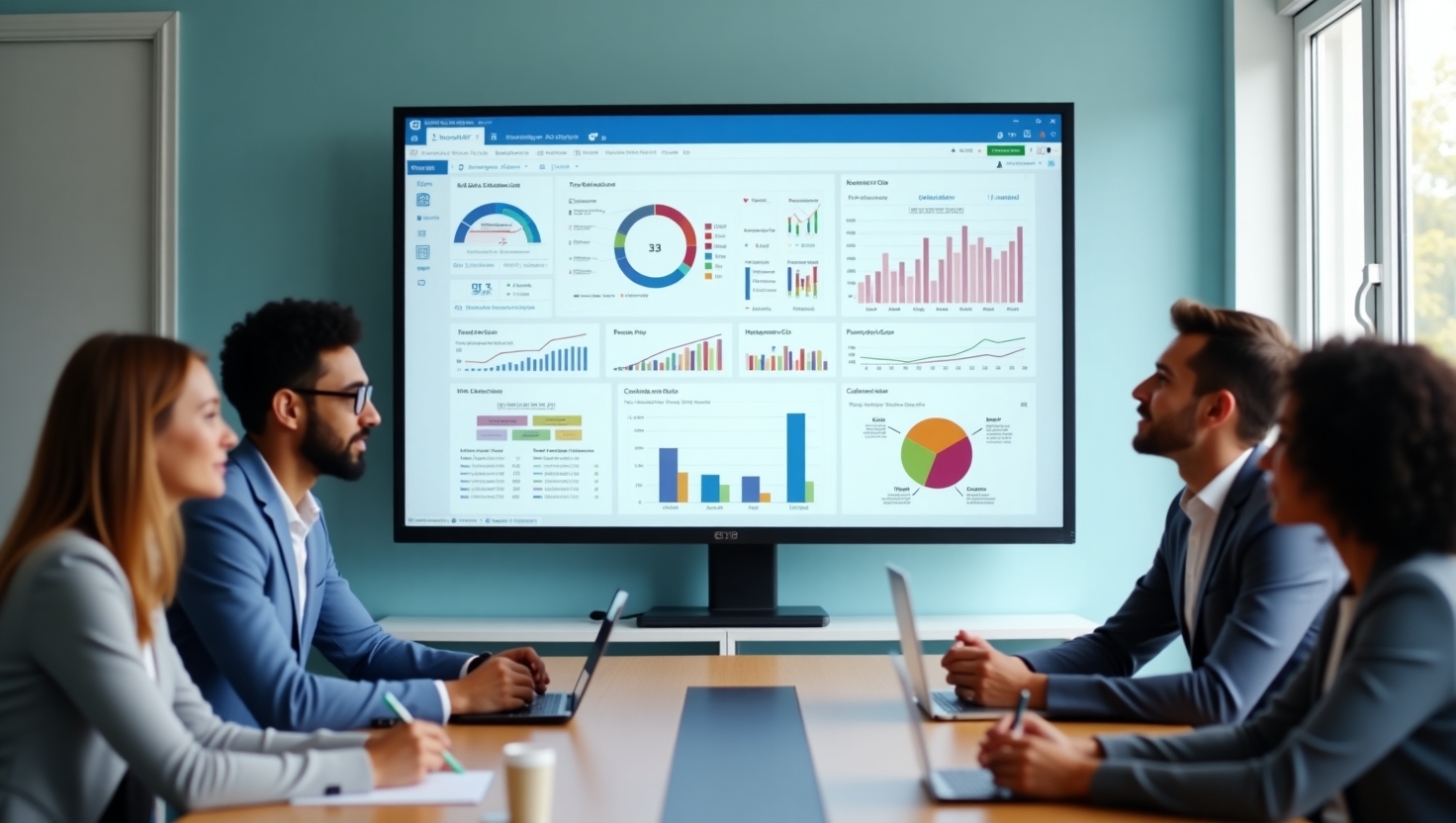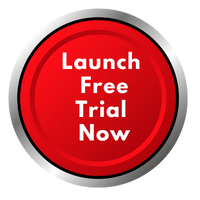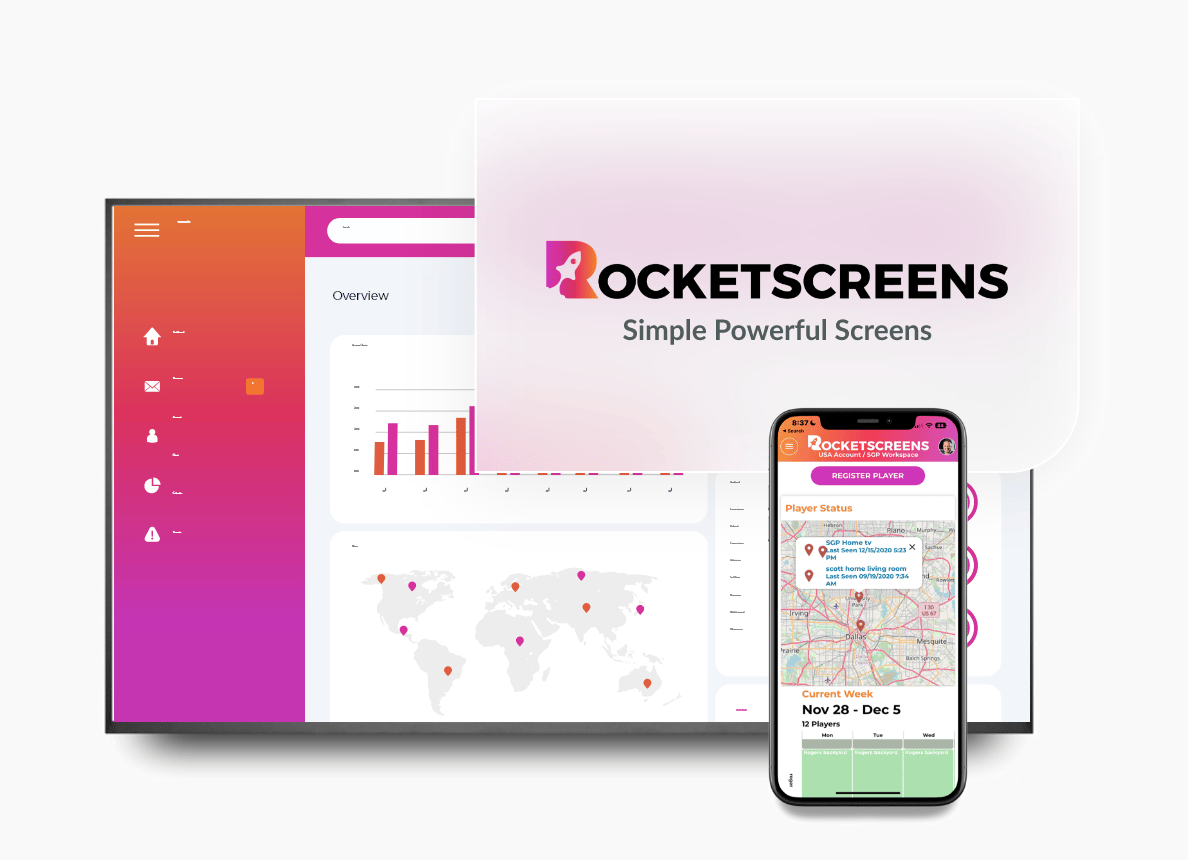
In a crowded marketplace, capturing your audience's attention requires more than just a static display. It demands dynamic, relevant, and visually compelling content delivered with precision. This is where digital signage software becomes the central nervous system of your visual communication strategy. But with a market full of options, how do you find the one that fits your unique business needs?
This comprehensive guide breaks down the essential factors for choosing the right digital signage software. We will walk you through everything from key features and hardware compatibility to pricing models and vendor support. By the end, you'll feel confident in your decision, ready to select a solution that helps you connect with employees, inform customers, and drive growth.
1. What Is Digital Signage Software and Why Is It So Important?
At its core, digital signage software is the platform that allows you to create, manage, and distribute content to one or many digital displays. It's the brains behind the screens you see in retail stores, corporate offices, restaurants, and public spaces. Before this technology, changing content on a sign required a physical visit, manual transfers, and a lot of wasted time.
Today's cloud-based digital signage software completely changes that. It allows you to control a single screen or a global network of thousands from a central, web-based dashboard. This not only saves immense time but also allows for instant updates and dynamic content that can be tailored to specific locations, times, or audiences.
Think of it this way: the display is the canvas, but the software is the paint, the brushes, and the artist's studio all in one. Without a robust software platform, your digital displays are just expensive, static TVs.
2. Factor 1: Essential Features Your Digital Signage Software Must Have
Not all digital signage software is created equal. The features a marketing specialist needs for a retail store differ from what a business owner needs for internal office communication. However, several core features are non-negotiable for a truly effective solution.
Content Management and Scheduling
This is the most important feature. A good content management system (CMS) should provide an intuitive drag-and-drop interface for uploading media, creating layouts, and organizing content into playlists. Look for tools that offer:
- Templates: Pre-designed templates that make it easy to create professional-looking content quickly, even without design skills.
- Media Support: The ability to handle a variety of file types, including images (JPG, PNG), videos (MP4), and web content (HTML5).
- Advanced Scheduling: The ability to schedule content to play at specific dates, times, or on a recurring basis. For example, a restaurant could schedule breakfast menus for the morning, lunch menus for midday, and dinner menus for the evening.
Remote Management Capabilities
The ability to manage your screens from anywhere with an internet connection is a must. This feature provides flexibility and efficiency, especially for businesses with multiple locations. It allows you to update content, monitor screen health, and troubleshoot issues without being physically present.
Real-Time Updates and Data Integration
For dynamic content like live dashboards or news feeds, the software must support real-time updates. This allows you to display information that changes frequently, such as:
- Live sales data from a dashboard.
- The latest weather forecast.
- Live social media feeds.
Multi-Screen and Multi-Location Management
If you plan to scale your network, the software should simplify the process of managing many screens across different locations. Look for features that allow you to group screens, assign content to specific groups, and maintain a consistent brand message across all locations from a single dashboard.
3. Factor 2: Understanding Hardware Compatibility
Software and hardware work together. A software platform is only as good as the hardware it can run on. Before you decide, it’s crucial to understand the compatibility requirements.
Screens (Displays)
You can use a variety of displays, from standard consumer TVs to commercial-grade monitors and tablets. Ensure the software is compatible with the type of screen you plan to use. While a regular TV might be tempting for cost savings, commercial displays are built to run for extended periods and often come with built-in media players.
Media Players
A media player is a small device that runs the software and connects to the display. This is the bridge between your content and the screen. The software you choose will specify which media players are compatible. Common operating systems for these players include Android, Windows, and Chrome OS.
- Android Players: Often a cost-effective and flexible option.
- Windows Players: Powerful and reliable, suitable for more complex or interactive setups.
- Chrome OS Devices: Known for security and ease of management.
Rocketscreens is a simple digital signage platform that securely connects to over 100 applications to display your powerful information anywhere. This is a crucial point to remember when evaluating different software options.
4. Factor 3: Application Integrations Are Key
The true value of digital signage is its ability to connect with your existing business tools. A good software platform doesn't operate in a vacuum; it becomes part of your business's communication ecosystem.
Business Dashboards (Power BI, Tableau)
For corporate environments, displaying real-time Key Performance Indicators (KPIs) on screens can be a massive motivator. Look for software that can integrate with business intelligence platforms like Power BI and Tableau to display live sales, marketing, or operational data.
Communication Tools (Slack, Microsoft Teams)
Showcasing live messages, announcements, or project updates from platforms like Slack or Microsoft Teams can improve internal communication and keep employees informed.
Social Media and News Feeds
Displaying live social media feeds from platforms like X (Twitter), Instagram, or LinkedIn can keep your audience engaged. Similarly, live RSS news feeds can provide timely, relevant information.
Point-of-Sale (POS) Systems
For retail or hospitality, integrating with a POS system means that digital menu boards or product displays can automatically update prices and items, eliminating manual changes and ensuring accuracy.
5. Factor 4: Ease of Use for Your Team
The best digital signage software is one that everyone on your team can use with minimal training. The interface should be intuitive, and the content creation process should be simple. If the software is too complex, employees might avoid using it, and your investment won't deliver its full potential. Look for a solution with a clean dashboard and a clear workflow from content upload to screen playback.
6. Factor 5: Scalability for Future Growth
When selecting a digital signage software, think not only about your current needs but also your future plans. Will you add more screens? Expand to new locations? Implement video walls? A scalable solution can grow with you. This means the provider should offer different plans that can accommodate additional screens and users as your business expands.
For instance, a software that starts with a plan for a single screen and can easily scale to manage hundreds of screens across the country is a smart choice. It saves you the trouble of migrating to a new platform later on.
7. Factor 6: The Importance of Support and Security
Your relationship with the software provider doesn't end after you sign up. Reliable customer support is critical. What happens if a screen goes offline? Or if you have a question about a feature? Check for the following:
- Support Channels: Do they offer live chat, phone support, or a comprehensive knowledge base?
- Response Time: How quickly do they respond to support tickets?
- Training: Do they offer onboarding, tutorials, or webinars to help you get started?
Additionally, security should be a top priority. Your digital signage network is a part of your business infrastructure. The software should have secure access protocols, data encryption, and regular security updates to protect your content and data from unauthorized access.
8. Factor 7: Pricing Models and Total Cost of Ownership
Pricing for digital signage software can vary widely. The most common model is a monthly or annual subscription, typically priced per screen. When comparing costs, consider the following:
- Monthly vs. Annual Plans: Annual plans often come with a discount.
- Tiered Pricing: Most providers offer different tiers with varying features. Ensure the features you need are included in your chosen plan.
- Hardware Costs: Some vendors bundle hardware with their software, while others require you to purchase it separately.
- Hidden Fees: Ask about any setup fees, support charges, or costs for extra storage or integrations.
A careful comparison of the total cost of ownership will help you avoid surprises and select a solution that fits your budget for the long term.
9. Final Checklist: Making Your Choice
Before you make a final decision, use this checklist to compare your top candidates.
- Does the software provide the core content management features I need?
- Is it compatible with my existing or planned hardware?
- Does it offer the integrations that are important for my business?
- Is the user interface simple enough for my team to use?
- Can the software scale as my business grows?
- Is the provider’s customer support responsive and helpful?
- Are their security measures satisfactory?
- Does the total cost of ownership fit my budget?
By answering these questions, you will have a clear picture of which solution is the best fit.
10. The RocketScreens Advantage: A Complete Solution
At RocketScreens, we built our platform with these critical factors in mind. Our software is designed to be as simple as it is powerful, offering secure connections to over 100 applications. We believe that digital communication should be easy, effective, and accessible for any business. From our user-friendly drag-and-drop dashboard to our focus on robust integrations and responsive support, we provide a complete solution that empowers you to communicate with clarity and purpose.
Choosing the right digital signage software is a strategic decision that can dramatically affect your business's communication and growth. With a focus on features, compatibility, integrations, ease of use, scalability, and support, you can confidently select a platform that serves as a powerful tool for years to come.





